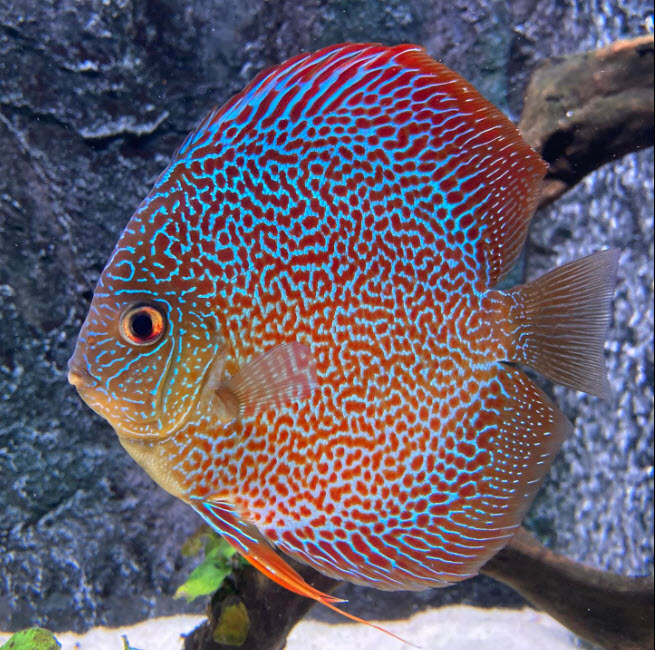
Newcomers to the hobby are bombarded in the fish store with all sorts of water treatments: conditioners, stress coat, pH adjusters, ammonia detoxifier, bacteria in a bottle, buffers, aquarium salt, ad. infinitum. Only a cheap conditioner is necessary. All the other products are simply scams. When it comes to water this is the “Rule”
.
If you can drink the water fish can thrive in it
.
Simple, easy.

Chloramine and Chlorine
If your water comes from a municipal source, it is probably chlorinated with chlorine or chloramine. Treating this water is vital for the health of the fish. Chlorinated water will kill all aquarium fish rapidly. We cover this topic extensively in this link:
5.5. Chlorine and Chloramine
If one’s tap water has not been treated with chlorine or chloramines (well water), then it can simply be added to the aquarium in most cases. Note some well water is very deficient in oxygen and needs to be preconditioned by exposing it to air for at least 24 hours prior to a water change.
Temperature
One does NOT need to closely match the temperature of the incoming water to the temperature of the water in the aquarium. All tropical fish will take temperature changes of ten degrees F (6 degrees C.) in stride, with only flashing being observed. This is keeping in mind that the change water needs to be above 65 degrees for most tropical fish. For a more in depth analysis go to these links:
4.2. Aquarium Temperatures
4.8. Stability is Not Important

Lack of Oxygen
If one has water which comes from a well or which comes from a municipal supply which uses wells, there can be a problem. Well water is normally very oxygen deficient. Changing 50% of the water out with well water can reduce the oxygen levels by roughly 50%. Fish will be stressed at this oxygen level. Most aquariums have enough aeration to relieve the stress in a few hours.
But one needs to note that the ability to resist deficient oxygen varies tremendously from one species of fish to another. Discus and Lake Malawi fish can die at levels where goldfish aren’t even bothered. This is where the “never do more than 50% water change” comes from. If one is on a well, a greater than 50% water change can distress or even kill fish.

Carbon Dioxide
Some people have tap water which is loaded with carbon dioxide and very acid (5.8 pH in one case). Such water can also stress fish slightly. Many people panic when they see the low pH. This low pH is typically only temporary, doesn’t hurt the fish, and goes away in several days. If the pH doesn’t rise after a few days of aeration one needs to increase the pH with a bag of crushed coral in the filter.
Conversely some people have very low carbon dioxide in their water. The pH out of the tap can be higher than in the aquarium because the water absorbs 2 to 4 ppm carbon dioxide from the atmosphere.

Pseudotropheus saulosi
Softened, Reverse Osmosis, and Deionized Water
Some hobbyists use various water treatments on their change water. We examine them in further depth in this article:
18.1.4. Softened, RO, DI, TDS
Further Research
There are some aquarium hobbyists who are interested in delving deep into the science and the calculations behind all aspects of the hobby. For those who are so inclined the following is pertinent:
18.1. Aquarium Water Changes
18.1.1. Water Changes in Depth
18.1.2. Water Change Math
18.2. Continuous Drip Water Change Systems
.
Return to Maintenance Menu
.
Aquarium Science Website
The chapters shown below or on the right side in maroon lead to close to 400 articles on all aspects of keeping a freshwater aquarium. These articles have NO links to profit making sites and are thus unbiased in their recommendations, unlike all the for-profit sites you will find with Google. Bookmark and browse!
.

Dave says
In reply to anonymous ….. I would be very surprised to see any negative consequences from using even a smelly PVC hose. I suspect something else killed the fish.
Anonymous says
yup, they’re dead. i hate pvc hoses
Anonymous says
i just bought a new hose, and it have a strange odor. i used the hose to water change my aquarium and the water smells like the hoses. do you think it’s safe for the fish. it says the material is DOF